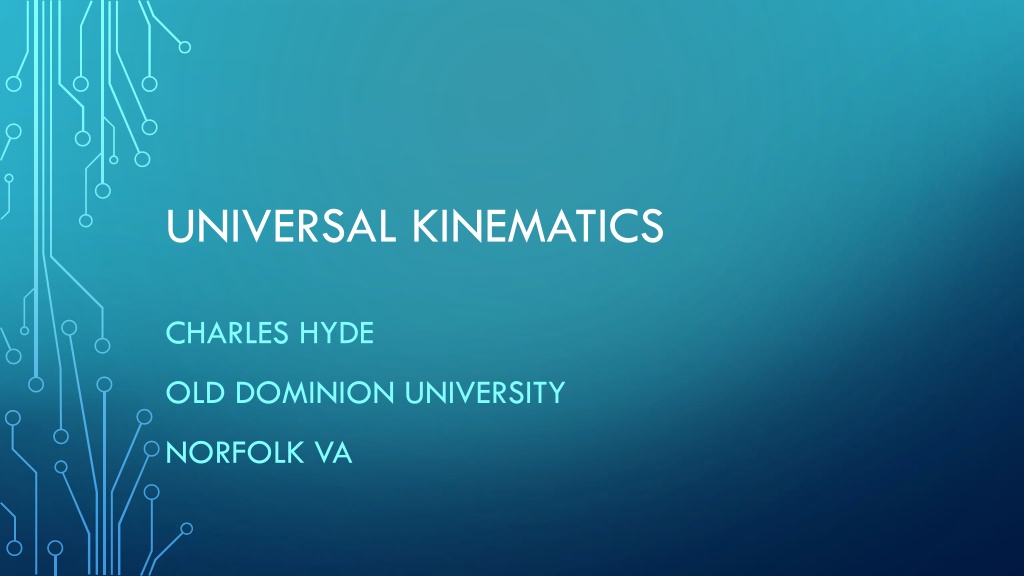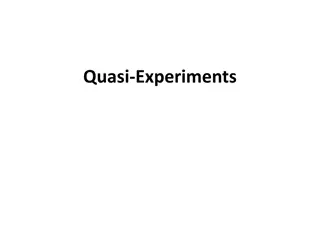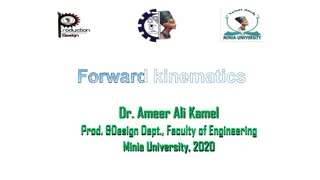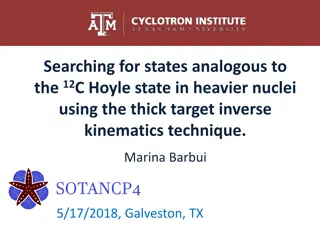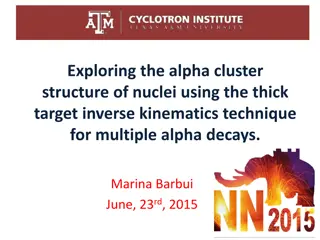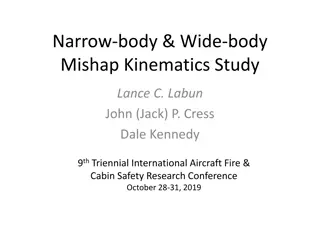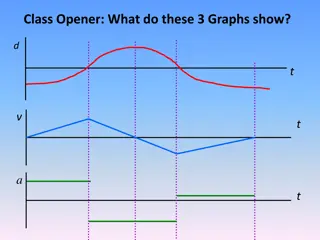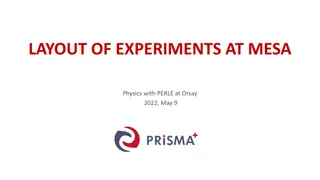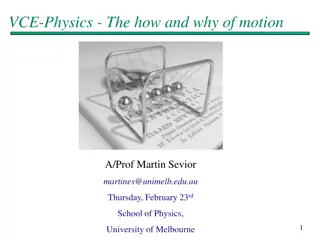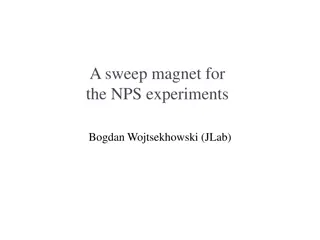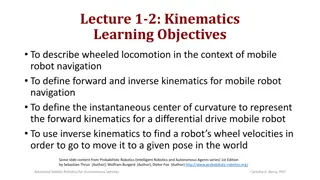Understanding Kinematics Challenges in High-Energy Physics Experiments
Delve into the complex world of kinematics in high-energy physics research, exploring challenges faced in collision simulations and event analysis. Discover how concepts like light-cone variables and covariant definitions play a crucial role in interpreting scattered electron data. Explore practical applications in event generation using tools like Pythia to reconstruct particle properties accurately in detector frames.
Download Presentation

Please find below an Image/Link to download the presentation.
The content on the website is provided AS IS for your information and personal use only. It may not be sold, licensed, or shared on other websites without obtaining consent from the author. Download presentation by click this link. If you encounter any issues during the download, it is possible that the publisher has removed the file from their server.
E N D
Presentation Transcript
UNIVERSAL KINEMATICS CHARLES HYDE OLD DOMINION UNIVERSITY NORFOLK VA
THE KINEMATIC CHALLENGE Most Generators assume head-on collisions Many Cross Section formulae for DIS, SIDIS, DVES are not-fully Lorentz invariant: 2?2 ???2 Electron azimuthal variable ?edefined in head-on frame Some ion polarization conventions refer to an event-by-event frame Virtual photon and target ion momenta are anti-collinear. EIC designs (and HL-LHC): non-zero collision angle Awkward to boost variables back and forth. 1 ? (??)2?2 ?? ?2+ ??2?1 DIS: ???????= ?2 C. HYDE, LIGHT-CONE KINEMATICS 22-26 July 2019 2
LIGHT-CONE VARIABLES From electron, ion 4-vectors k , P , define light-cone vectors (me2=0): ? ??1 2 ? ??= ?? ??= ? ?? 2 (2? ?) (? ?) n2= 0 = 2 In convention with k |k| and P |P|cos?Crossing |P| Target rest-frame ( ?=1): Define Lorentz Covariant Transverse Unit Vectors: X , Y X2 = 1 = Y2, X Y = 0 ,X n= X = 0 = Y n= Y Start with = (0,0,1,0) = up ?? ? ? ?? ( ? ?)?? 1+2 ? ? ( ? ?) n = 1 n [1,0,0, 1]/21/2, [1,0,0,1]/21/2 ?? ?? ????? ??????, 0123= 1 , C. HYDE, LIGHT-CONE KINEMATICS 22-26 July 2019 3
RIGHT-HANDED COORDINATE SYSTEM ??= ??+ ??/ 2 ?????????????= 1 =??????? ?????? + convention: ??= ?+ ?+ ? ? ? ? ? Incident Electron (me=0) and Incident Proton k+=0 ? = P+/?= M/ 2 ??= ?? ??/ 2 ?= ? ? ?? ? ? ?? ? 2 ? ? /? k =0 P =0 P ?= M/ ( 2) C. HYDE, LIGHT-CONE KINEMATICS 22-26 July 2019 4
COVARIANT DEFINITION OF SCATTERED ELECTRON Compute ? ? from k , P , xB, y, ?e: ? ?= ? ? ??+ ? ? ??+ |k | ???????+ ??????? ? += (? ?) ? = ? ? ?2= ? ? 2= 2? ? + 2? ? = 2? ? ? = 2? ?+ 2? ?++ 2? +? Invert: ? += ?2/(2? ) |k |2 = 2k +k 2? ?+= 2? ? 1 ? + 2? +? ?2 ? += 2? ?+?+= ????+ ? = 1 ? ? + ???? C. HYDE, LIGHT-CONE KINEMATICS 22-26 July 2019 5
APPLICATION: DIS EVENT GENERATOR E.G. PYTHIA Compute coordinate vectors ??, ??, ??,?? separately in Reference Frames of generator (with correct s = (k+P)2) and Collider Detector. Run Generator For all output four-vectors pa , a = 1,2, Compute invariants(p n), (p ), (p X), (p Y)using basis vectors in generator frame Reconstruct p in true detector frame, using vectors ??, ??, ??,?? defined to detector frame: ?? ?? No Lorentz boosts, rotations necessary. All is accomplished by defining ??, ??, ??,?? separately in two frames ? ???+ ?? ? ?? ?? ?? ???= ?? ? ??? ?? ? ??? ?? ? ??? C. HYDE, LIGHT-CONE KINEMATICS 22-26 July 2019 6
CUSTOM GENERATOR WITH CROSS SECTION FORMULA DEFINED ONLY IN PROTON-REST OR HEAD-ON COLLISION FRAME Define k , P in Collider (non-zero crossing angle) Frame = Lab frame. Compute reference vectors ??, ??, ??,?? in Collider Frame Choice of ? value is arbitrary, ? ?=1 puts reference system in target rest frame ? = (? ?2)/ ? 2 , ?+= ? = 2 = ??+ ? ????????????/? puts system in a head-on collider frame with ? =?0 ?? 2 = n.b. Proton energy EpLab [ (P++P )/ 2 ]Head-on frame Generate DIS event by (Q2, xB, ?e) or (y, xB, ?e) ?2 2?+ 2?0, ?+= ??+ ? ????????????/ 2, ? = C. HYDE, LIGHT-CONE KINEMATICS 22-26 July 2019 7
NUCLEI M MA xB xA=Q2/(2q PA) y y = (q PA)/(k PA) C. HYDE, LIGHT-CONE KINEMATICS 22-26 July 2019 8
SPECTATOR TAGGING D(e,e ps)X d F2,n/t 2 t = Mn2 (PD pp)2 0.004 GeV2 Uncertainty in Beam emittances are major systematics in defining t Proton recoil resolution comparable to beam emittance High resolution neutron tagging 35%/ En Measure F2p of bound proton in D C. HYDE, LIGHT-CONE KINEMATICS 22-26 July 2019 9
FINAL STATE RECONSTRUCTION Current Jet and Target fragmentation jet reconstruction requires proper kinematics in detector frame C. HYDE, LIGHT-CONE KINEMATICS 22-26 July 2019 10
CONCLUSIONS Many legacy codes and published cross section codes are not fully covariant Light-cone (& Sudakov) variables ??, ??, ??,?? defined in both the detector frame and a head-on collider frame provide a natural adaptation, without the need for repeated rotations and boosts of all variables. C. HYDE, LIGHT-CONE KINEMATICS 22-26 July 2019 11
